-
 Bitcoin
Bitcoin $83,622.6306
-1.03% -
 Ethereum
Ethereum $1,589.6945
-1.99% -
 Tether USDt
Tether USDt $1.0000
0.01% -
 XRP
XRP $2.0889
-1.88% -
 BNB
BNB $580.0353
-0.85% -
 Solana
Solana $126.7178
-2.33% -
 USDC
USDC $1.0000
-0.01% -
 TRON
TRON $0.2506
-0.43% -
 Dogecoin
Dogecoin $0.1537
-3.31% -
 Cardano
Cardano $0.6091
-4.20% -
 UNUS SED LEO
UNUS SED LEO $9.3201
-0.87% -
 Chainlink
Chainlink $12.2503
-3.06% -
 Avalanche
Avalanche $19.0105
-5.53% -
 Stellar
Stellar $0.2359
-1.88% -
 Toncoin
Toncoin $2.8505
-1.13% -
 Shiba Inu
Shiba Inu $0.0...01170
-2.63% -
 Sui
Sui $2.0950
-4.30% -
 Hedera
Hedera $0.1569
-4.99% -
 Bitcoin Cash
Bitcoin Cash $319.8208
-1.32% -
 Litecoin
Litecoin $75.7238
-2.04% -
 Polkadot
Polkadot $3.5266
-3.99% -
 Dai
Dai $1.0001
0.01% -
 Bitget Token
Bitget Token $4.2562
-1.04% -
 Hyperliquid
Hyperliquid $15.1159
-4.03% -
 Ethena USDe
Ethena USDe $0.9992
0.01% -
 Pi
Pi $0.6455
-12.89% -
 Monero
Monero $215.1633
0.19% -
 Uniswap
Uniswap $5.1866
-3.08% -
 OKB
OKB $51.9360
-0.45% -
 Pepe
Pepe $0.0...06972
-4.89%
What is an empty block? Why do miners mine empty blocks?
Empty blocks in Bitcoin contain only the coinbase transaction, mined for faster network propagation and strategic reasons, impacting blockchain efficiency and security.
Apr 16, 2025 at 01:28 am
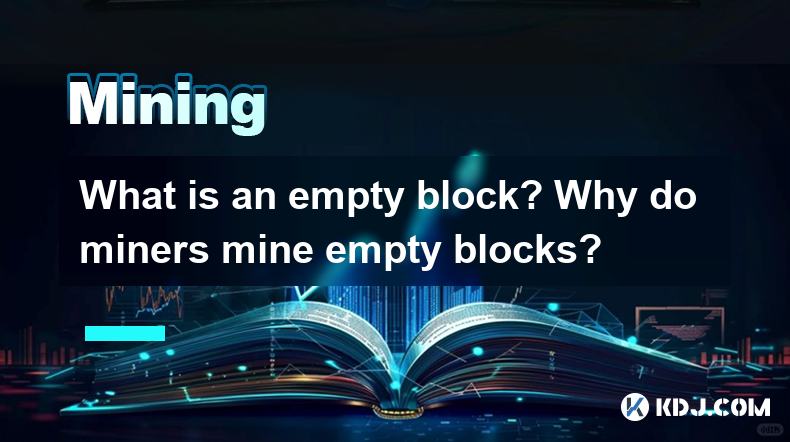
What is an Empty Block?
An empty block in the context of blockchain technology, particularly in cryptocurrencies like Bitcoin, refers to a block that contains no transactions other than the coinbase transaction. The coinbase transaction is a special transaction in which new bitcoins are generated and awarded to the miner who successfully mines the block.
In Bitcoin, a block typically contains multiple transactions that are verified and added to the blockchain. However, an empty block contains only the coinbase transaction, hence the term "empty." The size of an empty block is minimal, usually around 200-300 bytes, which is significantly smaller than a typical block that can reach up to the maximum block size limit of 4MB with SegWit.
Why Do Miners Mine Empty Blocks?
Miners mine empty blocks for several reasons, which can be broadly categorized into technical and strategic reasons.
Technical Reasons
One of the primary technical reasons for mining empty blocks is related to the network propagation time. When a miner finds a block, they need to broadcast it to the entire network as quickly as possible. The faster a block is propagated, the less chance there is for another miner to find a competing block, which could lead to a fork in the blockchain.
- Faster Propagation: An empty block is smaller in size, allowing it to be transmitted across the network more quickly than a block filled with transactions. This can give the miner a competitive advantage by reducing the likelihood of a competing block being found and accepted by the network.
- Network Congestion: During times of high network congestion, miners might opt to mine an empty block to ensure it is included in the blockchain before other miners can find and propagate their own blocks.
Strategic Reasons
Strategically, miners might choose to mine empty blocks for reasons related to their mining strategy and the dynamics of the mining pool they are part of.
- Pool Strategy: Some mining pools might implement strategies that occasionally result in empty blocks being mined. For example, a pool might prioritize the speed of block discovery over the inclusion of transactions to maintain a competitive edge in the mining race.
- Fee Management: Miners are also influenced by transaction fees. If the transaction fees in the mempool (the pool of unconfirmed transactions) are low, miners might find it more profitable to mine an empty block and collect only the block reward rather than including transactions with low fees.
The Impact of Mining Empty Blocks
Mining empty blocks can have various impacts on the overall health and efficiency of the blockchain network.
- Blockchain Health: While occasional empty blocks do not significantly harm the blockchain, a high frequency of empty blocks can slow down transaction processing and increase the time it takes for transactions to be confirmed.
- Network Efficiency: Empty blocks can lead to a more efficient network in terms of block propagation but at the cost of reduced transaction throughput. This trade-off is something miners and network participants need to consider.
Examples of Empty Blocks in Bitcoin
To illustrate the concept of empty blocks, let's look at some historical data from the Bitcoin blockchain.
- Block 125552: This block, mined on May 21, 2011, is one of the earliest examples of an empty block in the Bitcoin blockchain. It contains only the coinbase transaction and no other transactions.
- Block 503882: Mined on January 10, 2018, this block is another example of an empty block. It was mined during a period of high network congestion, which might have influenced the miner's decision to mine an empty block.
How to Identify Empty Blocks
Identifying empty blocks on the Bitcoin blockchain can be done using various blockchain explorers and tools. Here is a step-by-step guide on how to do this using a popular blockchain explorer like Blockchain.com:
- Visit Blockchain.com: Navigate to the Blockchain.com website.
- Search for a Block: Use the search bar to enter the block height or hash of the block you want to check.
- Check Block Details: Once the block details are displayed, look at the list of transactions. If the only transaction listed is the coinbase transaction, then the block is an empty block.
The Role of Empty Blocks in Blockchain Security
Empty blocks also play a role in the security of the blockchain. They contribute to the overall security by maintaining the chain's integrity and ensuring that the network continues to function even when transaction volumes are low.
- Chain Continuity: Even if there are no transactions to be included, miners continue to mine blocks to keep the blockchain growing. This helps prevent potential attacks that could exploit periods of inactivity.
- Security Against 51% Attacks: The continuous mining of blocks, even empty ones, helps to secure the network against 51% attacks by ensuring that the chain remains active and difficult to manipulate.
Frequently Asked Questions
Q: Can empty blocks affect the value of a cryptocurrency?
A: Empty blocks themselves do not directly affect the value of a cryptocurrency. However, if the frequency of empty blocks becomes high, it could lead to slower transaction processing times, which might indirectly impact user confidence and, consequently, the cryptocurrency's value.
Q: Are empty blocks more common in certain cryptocurrencies?
A: The frequency of empty blocks can vary between different cryptocurrencies. For instance, Bitcoin Cash, which has a larger block size limit, might have fewer empty blocks compared to Bitcoin due to its ability to include more transactions per block. However, the occurrence of empty blocks is influenced more by network conditions and miner strategies than by the specific cryptocurrency.
Q: How can miners be incentivized to mine non-empty blocks?
A: Miners can be incentivized to mine non-empty blocks through higher transaction fees. If the fees for transactions in the mempool are high enough, miners will find it more profitable to include these transactions in their blocks rather than mining empty blocks. Additionally, some mining pools might implement policies that encourage the inclusion of transactions to maximize overall revenue.
Disclaimer:info@kdj.com
The information provided is not trading advice. kdj.com does not assume any responsibility for any investments made based on the information provided in this article. Cryptocurrencies are highly volatile and it is highly recommended that you invest with caution after thorough research!
If you believe that the content used on this website infringes your copyright, please contact us immediately (info@kdj.com) and we will delete it promptly.
- Public Companies Added Nearly 100,000 Bitcoin To Their Balance Sheets During Q1 2025
- 2025-04-16 07:15:16
- Amidst the Stormy Seas of the Crypto World, a New Titan Emerges—BlockDAG
- 2025-04-16 07:15:16
- Bitcoin (BTC) reclaims $85,000, setting the stage for altcoins to rally
- 2025-04-16 07:15:14
- The Pi Network token price has increased by more than 14% over the past week.
- 2025-04-16 07:15:14
- A wave of capital is flowing out of Ethereum [ETH] and into Tron [TRX]
- 2025-04-16 07:05:14
- Figment to power 3iQ's newly approved Solana exchange-traded fund (ETF)
- 2025-04-16 07:05:14
Related knowledge
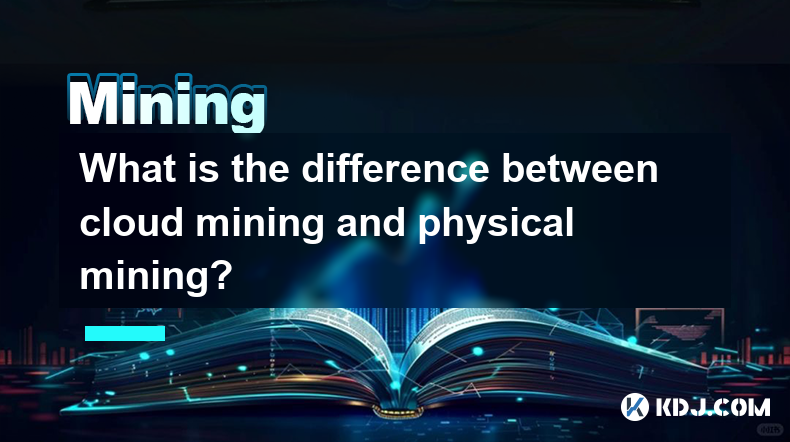
What is the difference between cloud mining and physical mining?
Apr 16,2025 at 01:49am
What is the difference between cloud mining and physical mining? In the world of cryptocurrencies, mining is the process by which new coins are generated and transactions are verified and added to the blockchain. There are two primary methods of mining: cloud mining and physical mining. Understanding the differences between these two approaches can help...
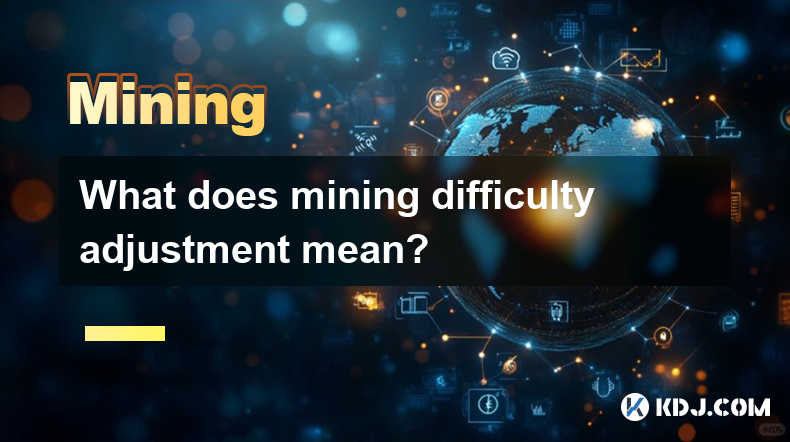
What does mining difficulty adjustment mean?
Apr 16,2025 at 12:42am
What does mining difficulty adjustment mean? Mining difficulty adjustment is a crucial mechanism in blockchain networks, particularly in Proof of Work (PoW) systems like Bitcoin. It ensures that the rate at which new blocks are added to the blockchain remains consistent, despite fluctuations in the total computational power (hash rate) of the network. T...
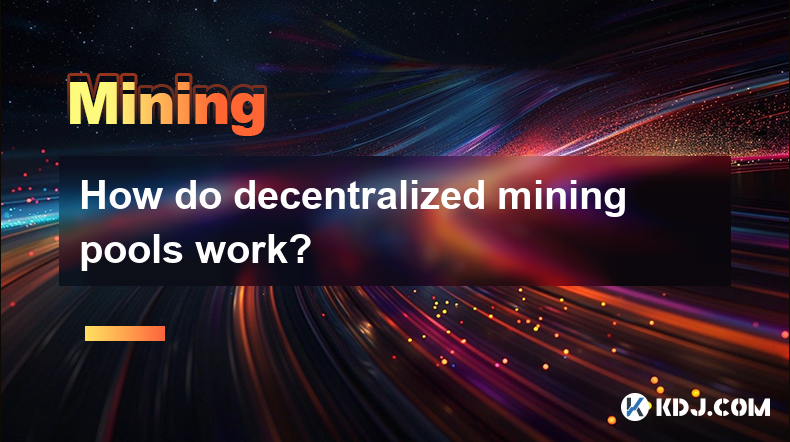
How do decentralized mining pools work?
Apr 16,2025 at 05:42am
Decentralized mining pools represent a significant evolution in the world of cryptocurrency mining, offering a more democratic and transparent approach compared to traditional centralized pools. In this article, we will explore the mechanics of decentralized mining pools, their benefits, and how they operate within the cryptocurrency ecosystem. What are...

What is an empty block? Why do miners mine empty blocks?
Apr 16,2025 at 01:28am
What is an Empty Block?An empty block in the context of blockchain technology, particularly in cryptocurrencies like Bitcoin, refers to a block that contains no transactions other than the coinbase transaction. The coinbase transaction is a special transaction in which new bitcoins are generated and awarded to the miner who successfully mines the block....

What is the KawPow algorithm?
Apr 16,2025 at 06:43am
The KawPow algorithm is a proof-of-work (PoW) consensus mechanism specifically designed for the Ravencoin blockchain. It evolved from the earlier X16R and X16RV2 algorithms, aiming to enhance the security and efficiency of the mining process. KawPow was introduced to address the issues associated with ASIC (Application-Specific Integrated Circuit) miner...
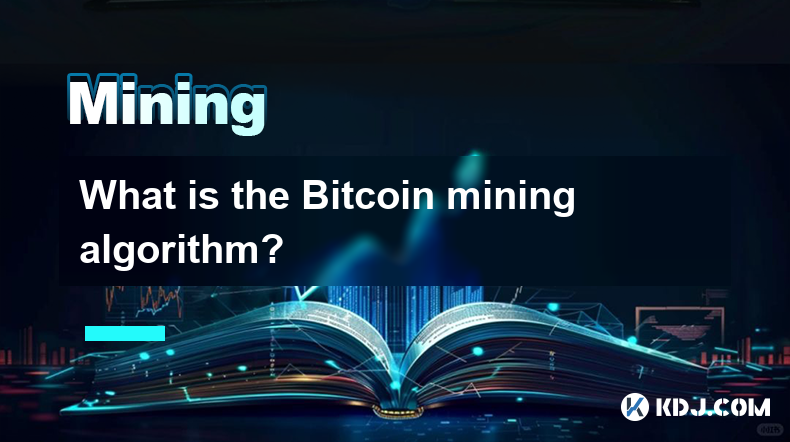
What is the Bitcoin mining algorithm?
Apr 15,2025 at 08:00pm
What is the Bitcoin Mining Algorithm? Bitcoin mining is a crucial process that maintains the integrity and security of the Bitcoin network. At the heart of this process lies the Bitcoin mining algorithm, which is responsible for verifying transactions and adding them to the blockchain. Understanding this algorithm is essential for anyone interested in t...

What is the difference between cloud mining and physical mining?
Apr 16,2025 at 01:49am
What is the difference between cloud mining and physical mining? In the world of cryptocurrencies, mining is the process by which new coins are generated and transactions are verified and added to the blockchain. There are two primary methods of mining: cloud mining and physical mining. Understanding the differences between these two approaches can help...

What does mining difficulty adjustment mean?
Apr 16,2025 at 12:42am
What does mining difficulty adjustment mean? Mining difficulty adjustment is a crucial mechanism in blockchain networks, particularly in Proof of Work (PoW) systems like Bitcoin. It ensures that the rate at which new blocks are added to the blockchain remains consistent, despite fluctuations in the total computational power (hash rate) of the network. T...

How do decentralized mining pools work?
Apr 16,2025 at 05:42am
Decentralized mining pools represent a significant evolution in the world of cryptocurrency mining, offering a more democratic and transparent approach compared to traditional centralized pools. In this article, we will explore the mechanics of decentralized mining pools, their benefits, and how they operate within the cryptocurrency ecosystem. What are...

What is an empty block? Why do miners mine empty blocks?
Apr 16,2025 at 01:28am
What is an Empty Block?An empty block in the context of blockchain technology, particularly in cryptocurrencies like Bitcoin, refers to a block that contains no transactions other than the coinbase transaction. The coinbase transaction is a special transaction in which new bitcoins are generated and awarded to the miner who successfully mines the block....

What is the KawPow algorithm?
Apr 16,2025 at 06:43am
The KawPow algorithm is a proof-of-work (PoW) consensus mechanism specifically designed for the Ravencoin blockchain. It evolved from the earlier X16R and X16RV2 algorithms, aiming to enhance the security and efficiency of the mining process. KawPow was introduced to address the issues associated with ASIC (Application-Specific Integrated Circuit) miner...

What is the Bitcoin mining algorithm?
Apr 15,2025 at 08:00pm
What is the Bitcoin Mining Algorithm? Bitcoin mining is a crucial process that maintains the integrity and security of the Bitcoin network. At the heart of this process lies the Bitcoin mining algorithm, which is responsible for verifying transactions and adding them to the blockchain. Understanding this algorithm is essential for anyone interested in t...
See all articles























































































